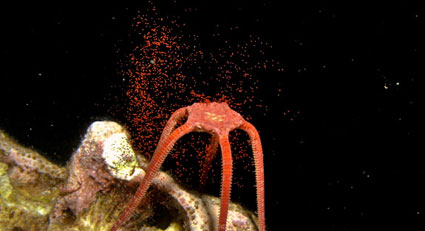Author: Andrew T. Der
Source: FWT Magazine
Exchanging glances with glowing sea creature eyes at night distracted me from my rippling scuba tank air bubbles. Under the glow of a flashlight, I weightlessly observed the rare annual confetti clouds of spawning coral egg packets floating like upward falling snow just days after the first August full moon.
Next time, I speared a lionfish and ate it.
Have all the fun of a Caribbean nature vacation and none of the work. Ecotours have their place, but the last time I checked, rest and relaxation are supposed to be – well – restful and relaxing. So while some rare and amazing eco-experiences may occur in remote destinations, no need to rough it or travel far to check out the critter action below and above the water at St. Lucia’s Anse Chastanet and Jade Mountain resorts.

Channel your inner marine biologist at the secluded, yet premium, environmentally sensitive Anse Chastanet, which is not only the home of their internationally acclaimed coral reef spawning, but other unique species behavior so vivid that Jacque Cousteau would be envious. Pronounced “ons shastanay”, this sustainable town-like resort community lets anyone easily find Nemo along with rare birds and sea turtles sprinkled with pampering, tree-top hotels, and locally sourced fine dining.
ST. LUCIA – THE ISLAND
St. “Looshia” is already a top Caribbean destination with an island mix of French, English, African and Creole history, but also adds an underappreciated educational and cultural experience. Both tropical seashores and rain forest preserves teem with rare fauna and flora.
Part of a colonial tug-of-war between the British and French from a slavery-based boom in tropical produce trade, English predominates as the official language blended with Patois (“Patwah”), a local Creole dialect mix on numerous islands. Secondary to tourism, agriculture is now perfected into an eco-friendly sustainable industry of superior farm-to-table produce – and the islanders do appreciate visitors.
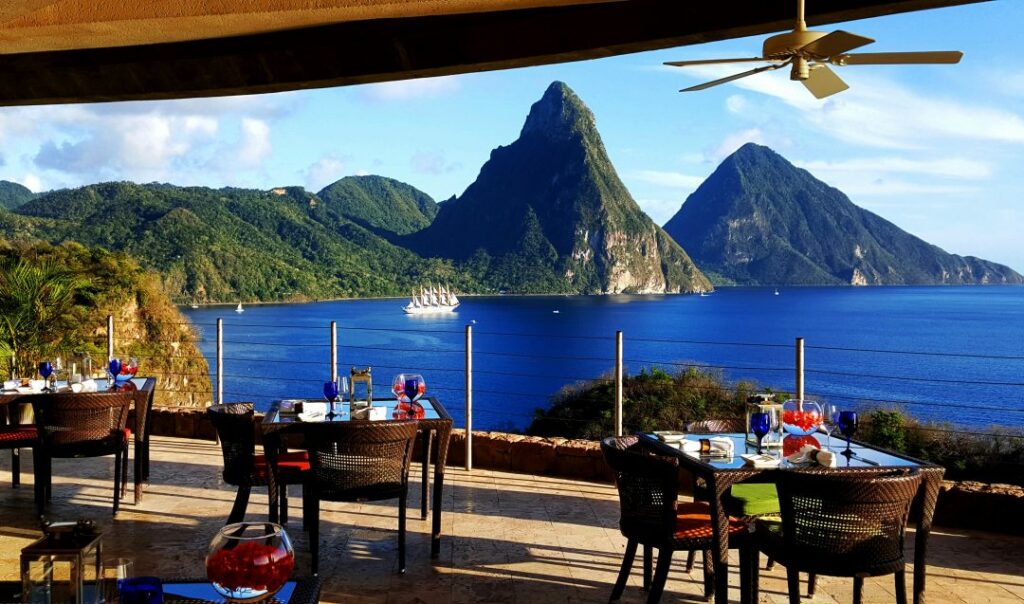
Bypass the resorts of the touristy northern capital city of Castries for more of St. Lucia’s gems in the lesser traveled south. Anse Chastanet serenely hides near the second largest city of Soufrière (sulfur in French), named after the sulfur-laden odor and springs associated with the Caribbean’s only drive-through active volcanic area. Volcanoes are the basis of the island’s formation with breathtaking rain-forested mountains right up to rocky seashores. The two main remnant peaks, or Pitons, are a UNESCO World Heritage site visually predominating as popular post card images.
THE RESORTS
A best-kept secret that is not so secret, is that Anse Chastanet’s 600-acre preserve also includes the premium internationally famous Jade Mountain Resort next door. Occasionally frequented by celebrities, Jade Mountain is on most prominent travel publication’s best-of lists (including Conde Nast) for premium couples getaways featuring in-room private pools and individual butler service.
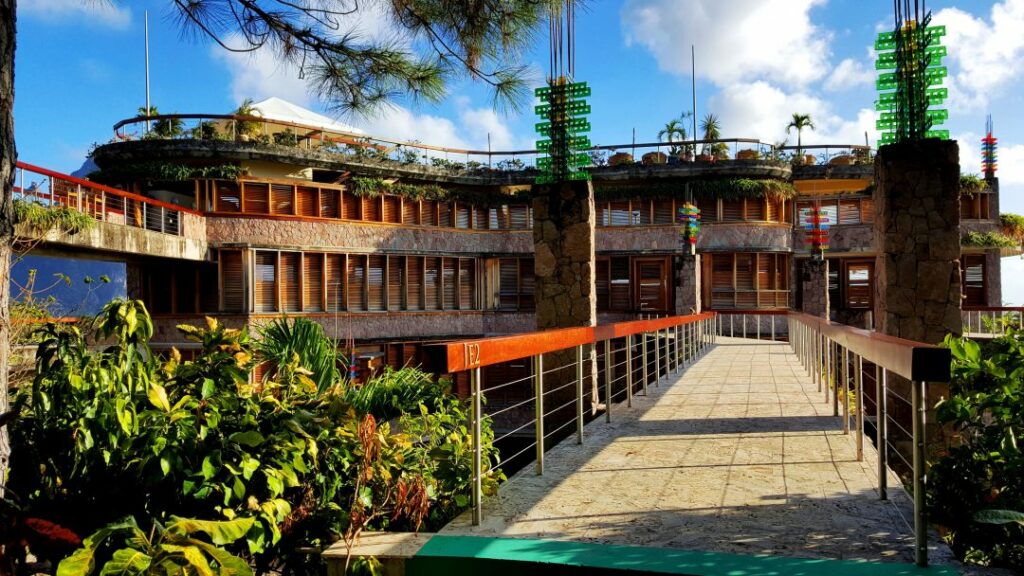
What may be less obvious is both resorts display exemplary environmental stewardship with ecologically sensitive and sustainable designs among resource-dense surroundings that preserve numerous natural habitats in one place. Most of their rooms are elevated on the hillside among cool breezes having open walls, positioned so as to not be viewable by others to maintain privacy. One room’s bath is even constructed around a tree to avoid cutting it down.
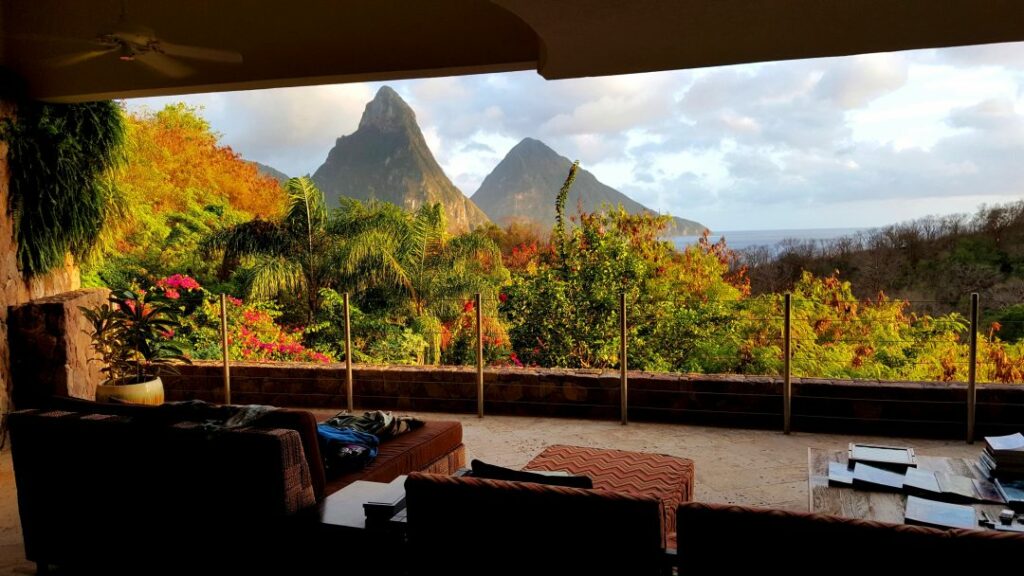

CORALS AND CRITTERS
If wanting to learn to dive has been on your bucket list, this is the place to do it. Take a newbie resort course with a guide in just a few hours. Or do a full certification course up north and arrange to have your outdoor, underwater portion completed here by reciprocal agreement. Before you know it, you too can witness the massive coral reproduction and how it triggers brittle starfish spawning immediately afterward.
So, what’s the big deal about coral spawning? Discovered in the 1980s at Australia’s Great Barrier Reef, this annual mass reproduction phenomena overturned a long-held belief that most coral species reproduced by internal fertilization, growing by “branching out.” The external phase of reproduction is now known to be critical to the coral reef’s, and our own ecosystem’s, survival, as well as essential to our world-wide food chains.
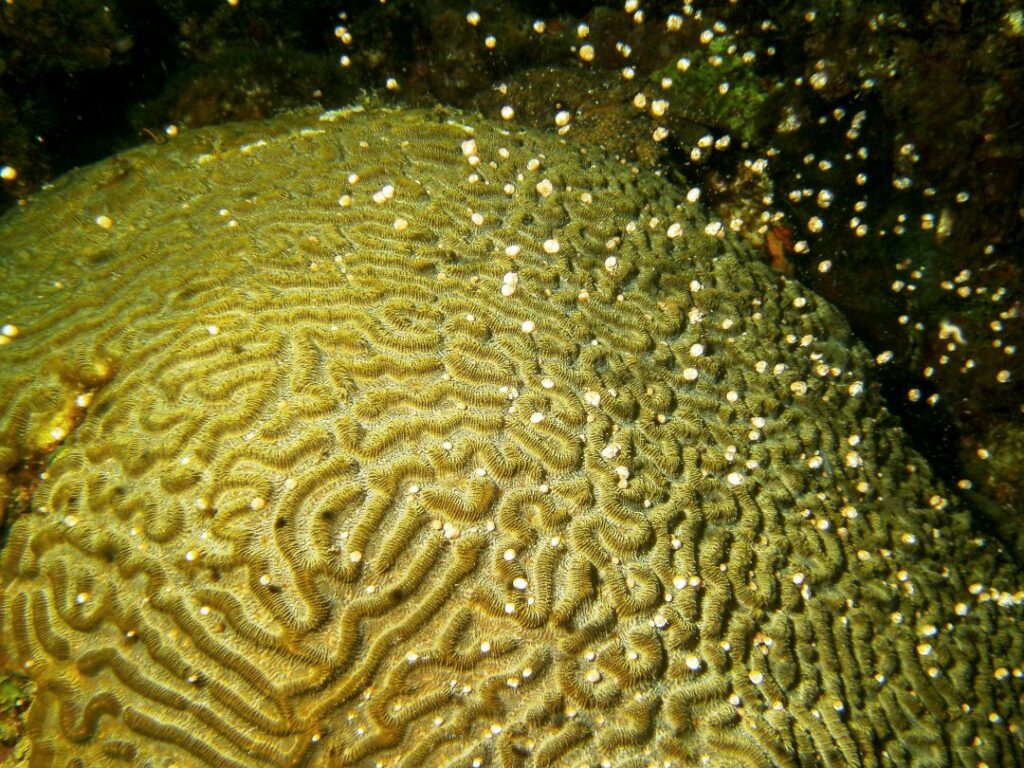
Anse Chastanet is the only place that provides easy and sustainable access due to its progressive green architecture by minimizing impervious surfaces, keeping shorelines stable, and completely preventing runoff from entering the water. Scuba St. Lucia, the island’s five-star Professional Association of Diving Instructors (PADI) operation, provides the only beach entry to this incredible experience. Don’t dive but still yearn for a National Geographic experience? Some of the best snorkeling in the Caribbean is right over the Anse Chastanet reef in front of the dive center.
But wait, there’s more. Scuba St. Lucia now fuses marine conservation, sport fishing, and fine dining with a new innovative and unique lionfish removal program to fortify their aggressive conservation initiatives.
Invasive – or non-naturally occurring – species from human activity are a chronic problem world-wide. This once-prized ornamental aquarium fish from the Pacific Ocean has found its way into the Caribbean, reproducing at an alarming rate due to few natural predators. Their numbers are severe enough to destructively displace indigenous species and reduce Atlantic biodiversity, adversely altering coral reef habitat.
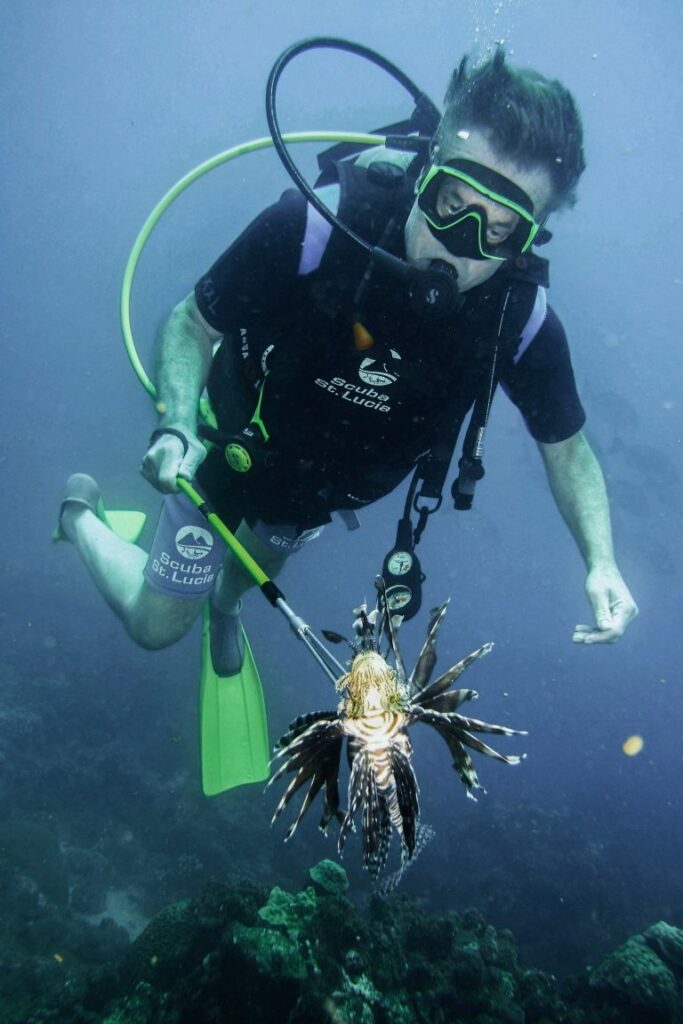
Take angling to the next level as a true hunt-to-table parallel to the premium farm-to-table menus. White, flaky, and firm with a flavor between grouper and mahi mahi, the resorts’ chefs will prepare this “conservation cuisine” to your liking, if large enough, and even serve it up with a specially catered beach gourmet dinner for two – pairing it with a wine of choice. Try it as sashimi, citrus ceviche, grilled or stewed.
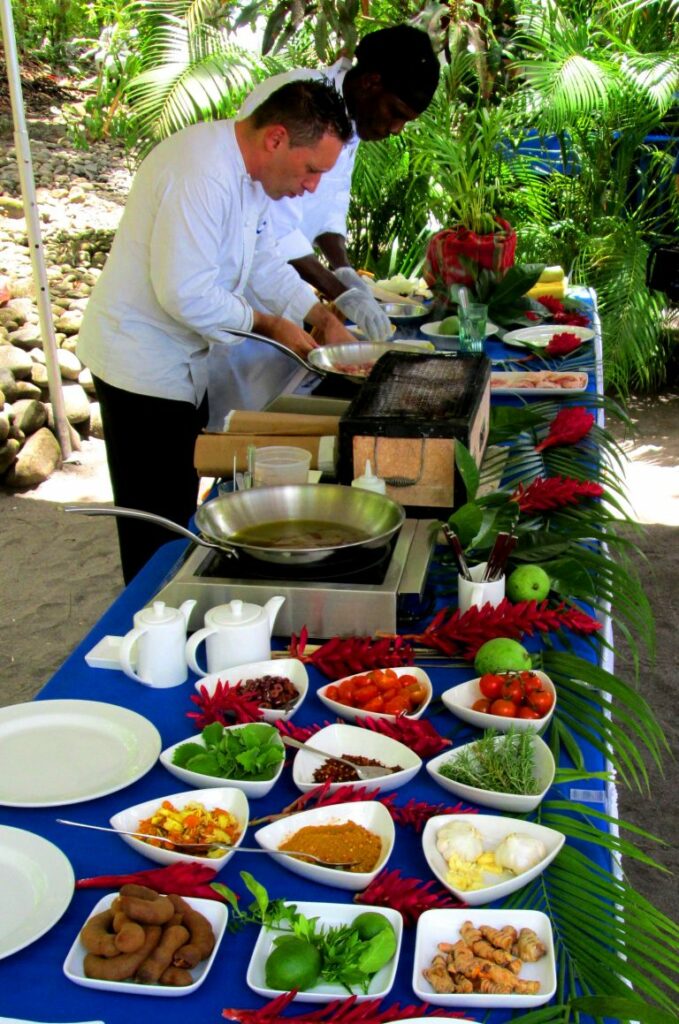
Don’t miss the ultimate annual St. Lucia Dive Fest when Anse Chastanet and Scuba St Lucia celebrate the underwater world from September 9 to 16 with a week of scheduled boat and shore dives, courses, photographic competitions – and a lionfish eradication day with a cooking demonstration and special dinner feast. Included is a sunset sailboat cruise with a close-up of the magnificent Pitons while sipping rum cocktails.
ABOVE THE WATER
If you’re needing a break from vegetating (is that possible?), Scuba St. Lucia’s sister operations of Kayak St. Lucia and Bike St. Lucia will also keep you busy on and above the water, including jungle forest bike riding in the Anse Mamin nature preserve next door. These ruins of an 18th-century colonial plantation are now a beachside forest natural area offering unlimited hiking and exotic plant and medicinal herb identification for the inner botanist. Sneak in some education with world-renowned bird watching and history appreciation, alone or with a local guide.


Most domestic airlines serving the Caribbean have nonstop flights from major U. S. cities to Hewanorra International Airport (code UVF). All-inclusive island and resort information is available from:
www.ansechastanet.com
www.jademountain.com
www.scubastlucia.com
www.stlucia.org
Many thanks to Anse Chastanet, Jade Mountain, and Scuba St. Lucia for hosting the author and providing an astounding experience.


